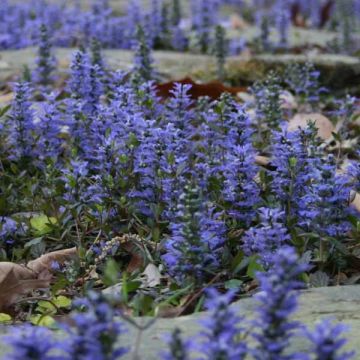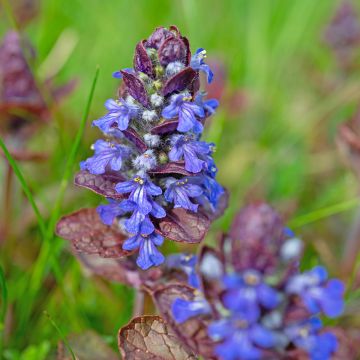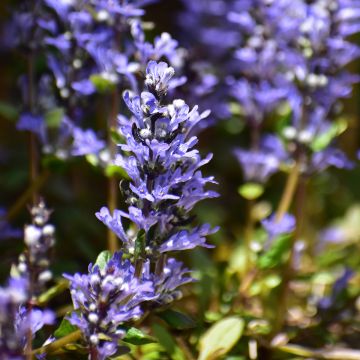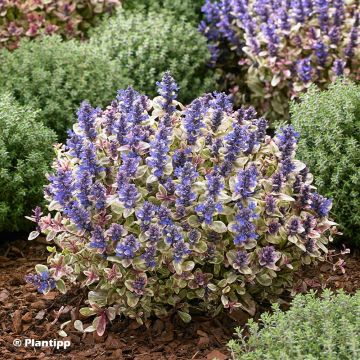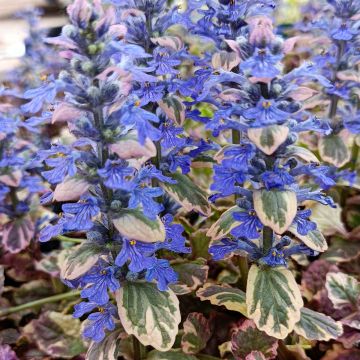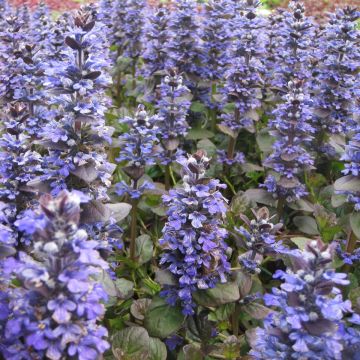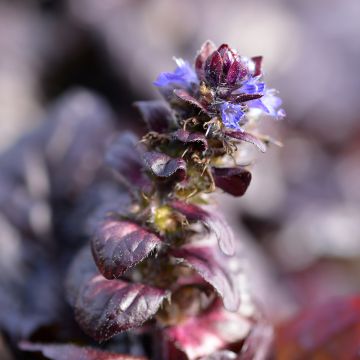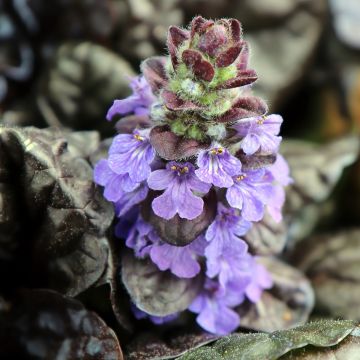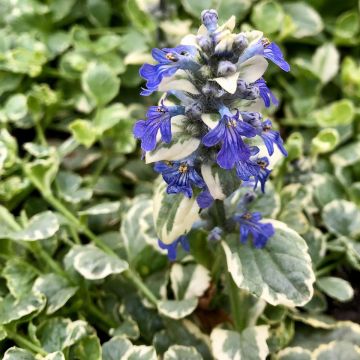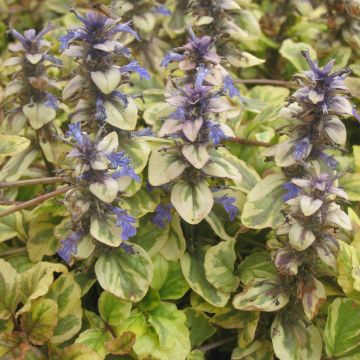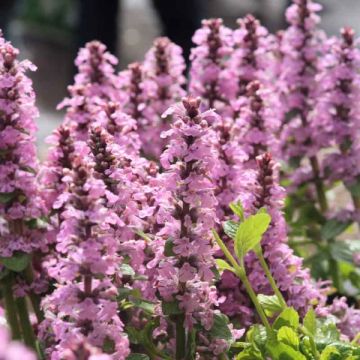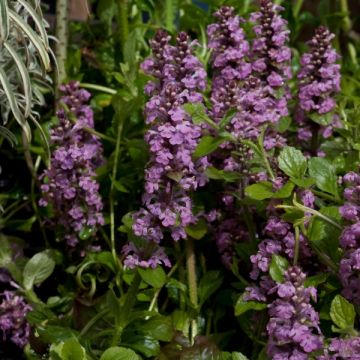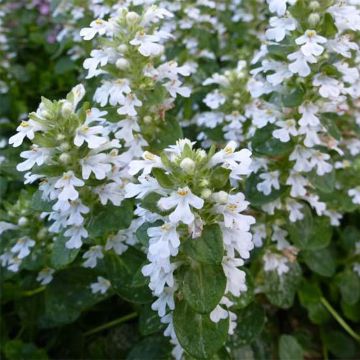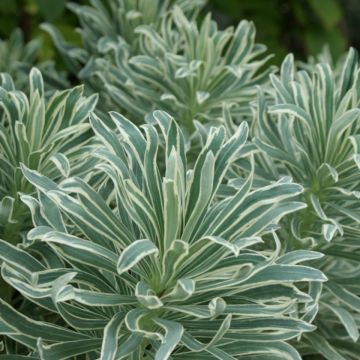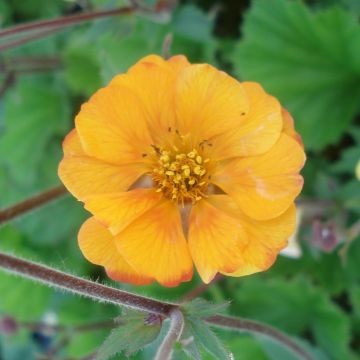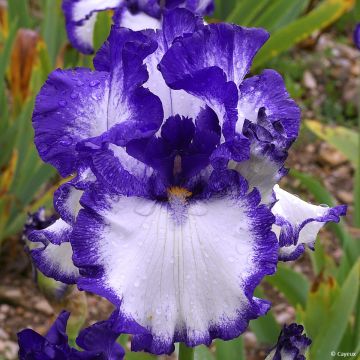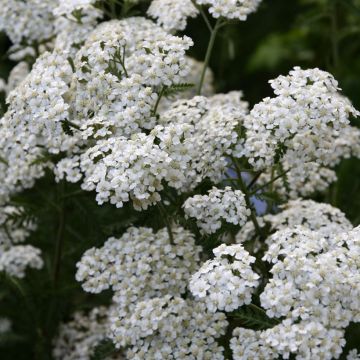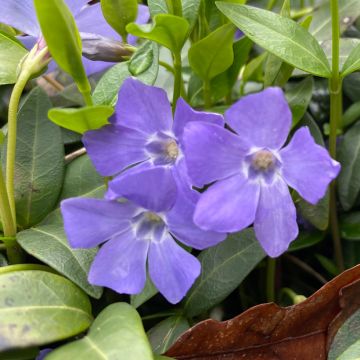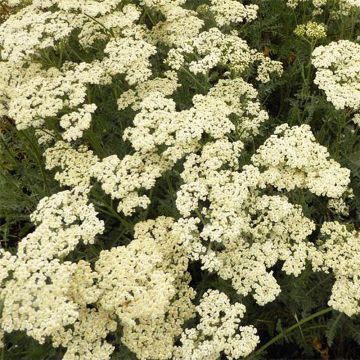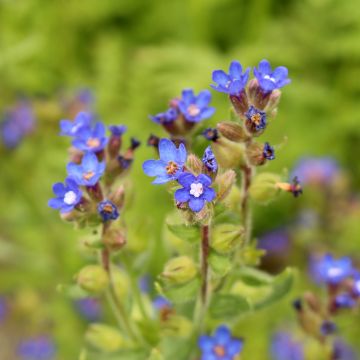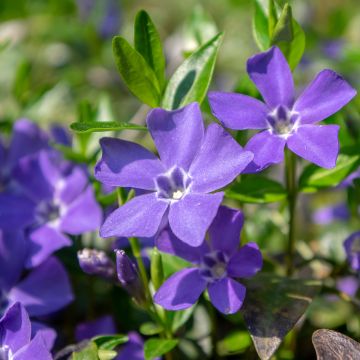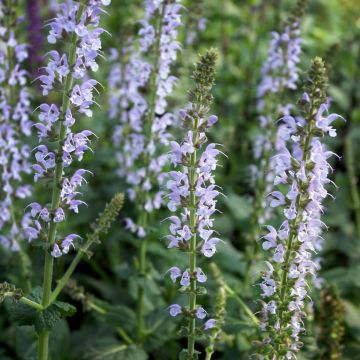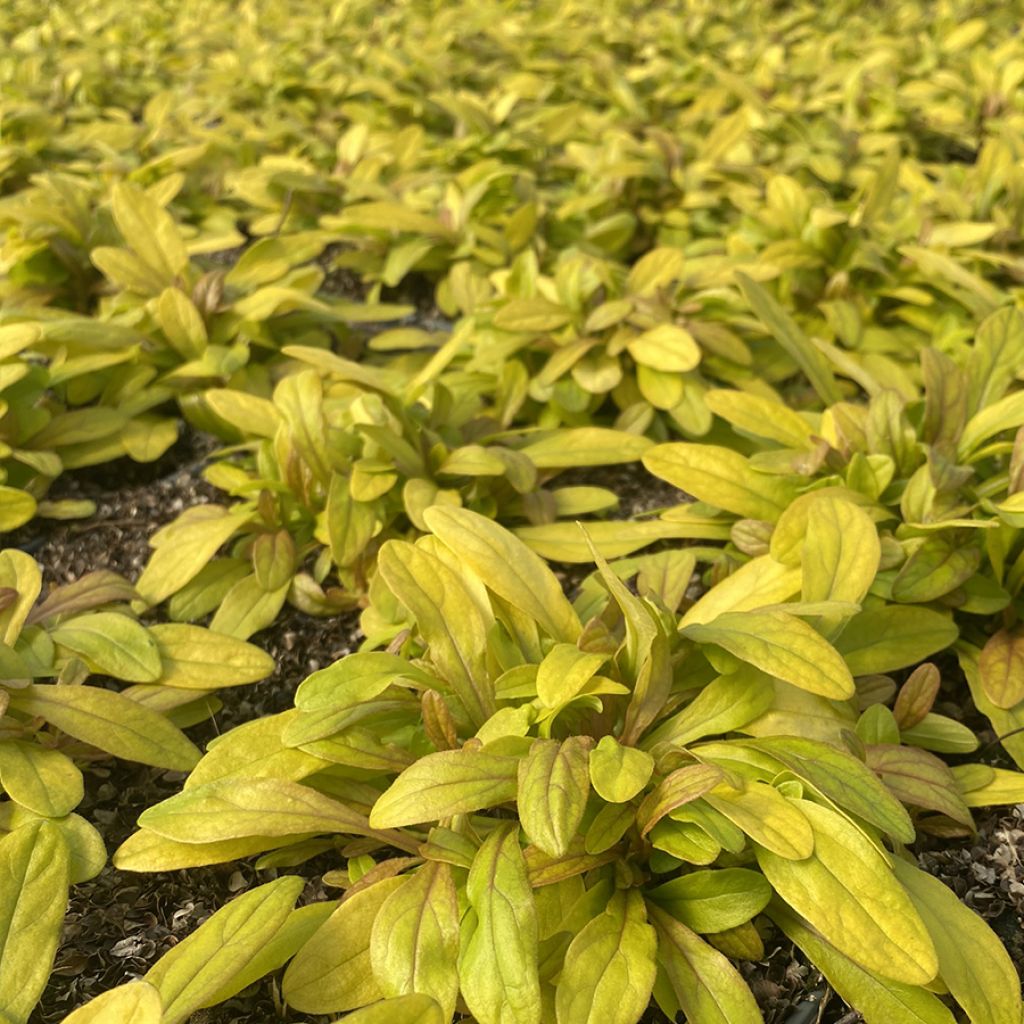

Ajuga Petite Parakeet - Bugle rampante
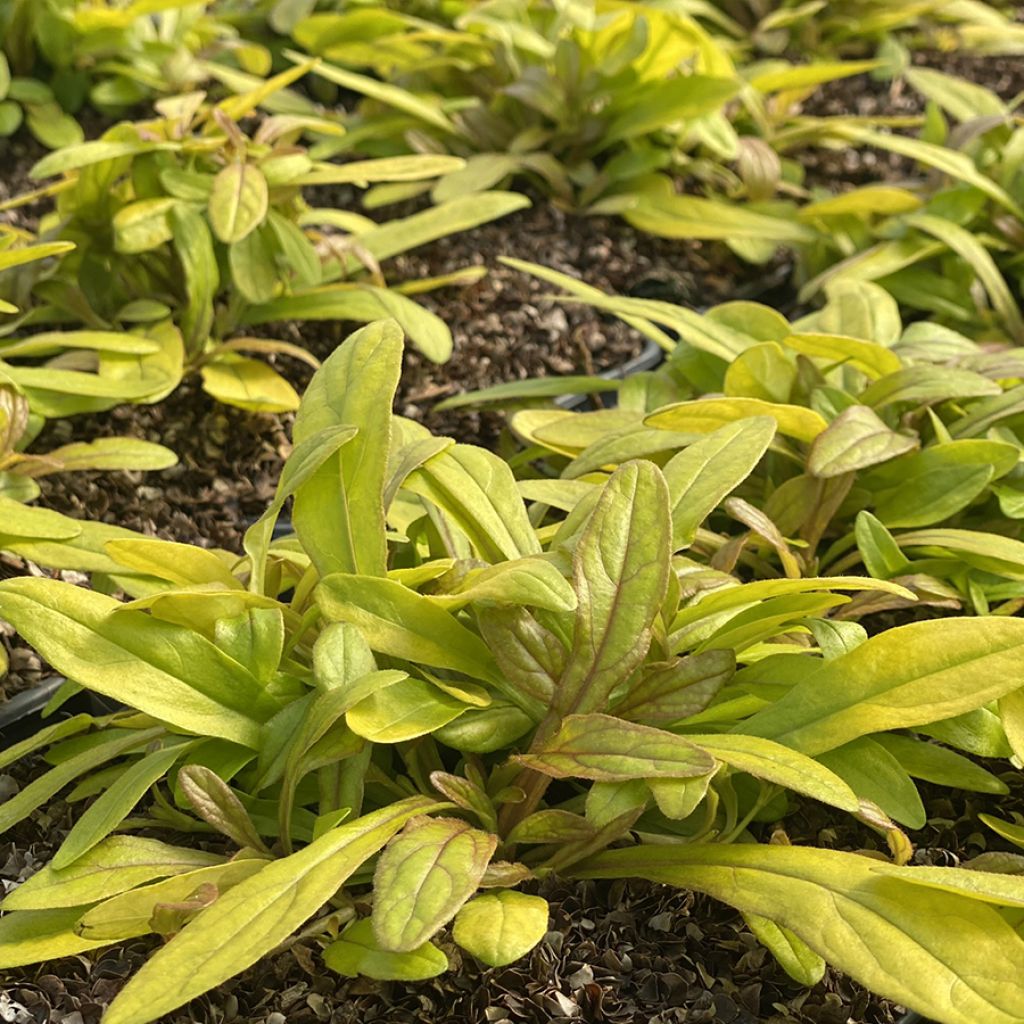

Ajuga Petite Parakeet - Bugle rampante
Ajuga reptans Petite Parakeet
Ajuga x reptans Petite Parakeet
Why not try an alternative variety in stock?
View all →This plant carries a 12 months recovery warranty
More information
We guarantee the quality of our plants for a full growing cycle, and will replace at our expense any plant that fails to recover under normal climatic and planting conditions.
From €5.90 for pickup delivery and €6.90 for home delivery
Express home delivery from €8.90.
Does this plant fit my garden?
Set up your Plantfit profile →
Description
Ajuga Petite Parakeet is a variety of creeping bugle, with a unique and colourful habit. This small perennial quickly forms a carpet of rounded leaves The golden yellow foliage is finely veined with coppery-orange, which become slightly greener over time. Its short spikes of bright blue flowers appear in spring, creating a beautiful contrast with the small golden leaves. It is slightly less vigorous than most forms. This variety is suitable for border and rock garden ornamentation, as well as container gardening. It should always be planted in partial shade or areas with morning sun only.
Ajuga Petite Parakeet is a perennial plant from the Lamiaceae family. It grows fairly quickly, rooting itself with stolons and eventually forming a 10 to 12cm (4 to 5in) tall carpet, with a minimum diameter of 40cm (16in). It develops semi-evergreen to evergreen rosettes of oblong, wavy and veined leaves. Their colour changes from yellow to lime green, with fine orange veins. The tips of the leaves are also tinged with coppery-orange. From May onwards, small spikes consisting of flowers no more than a few millimetres in size appear above the foliage. They are bilabiate and vivid blue. The flowers bloom for over a month.
Ajuga Petite Parakeet is a less exuberant variety that will happily occupy the space you give it. Its growth is easy to control by removing wandering stolons. It can make lovely potted displays when combined with florist's anemones, alyssums, or bellflowers. Bugles are among the best ground cover plants. They are perfect for dressing the base of trees and bushes in shaded beds, in combination with spring bulbs or lamiums with colourful foliage, delicate flowers, and beautiful leaves such as elfin flowers (Epimedium), or Geranium macrorrhizum. They are good companions for hostas and shade-loving perennial geraniums. In a moist rock garden, they can be planted alongside Acaena 'Blue Haze' or A. buchananii, Azorella trifurcata 'Nana', lady's mantles, and saxifrages.
Report an error about the product description
Ajuga reptans Petite Parakeet in pictures
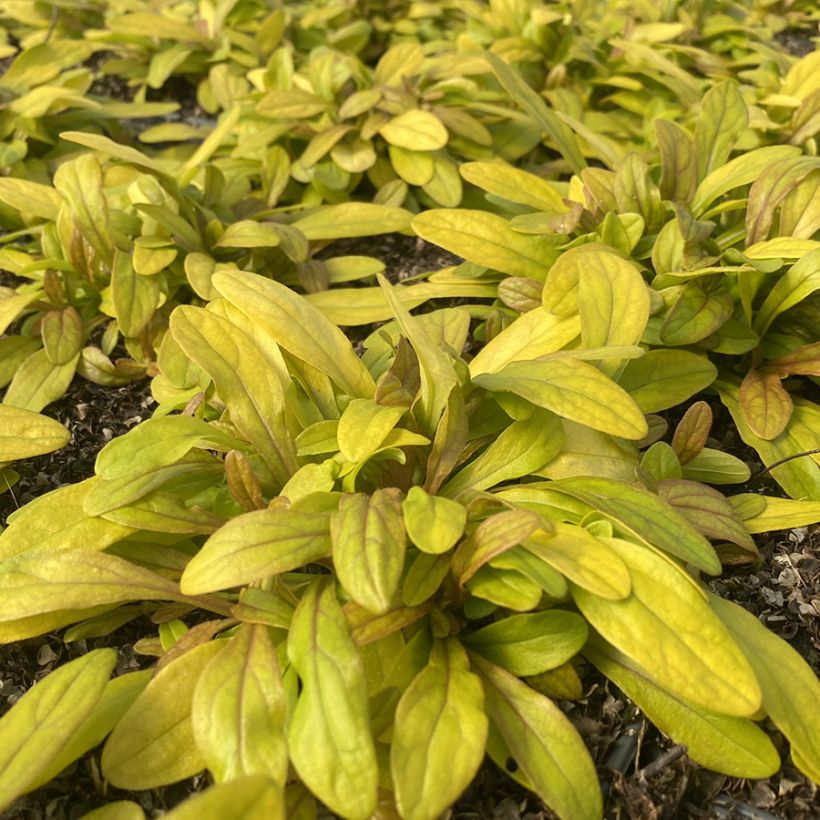

Flowering
Foliage
Plant habit
Botanical data
Ajuga
x reptans
Petite Parakeet
Lamiaceae
Cultivar or hybrid
Other Ajuga
Planting and care
It is undemanding regarding the nature of the soil. It does not tolerate prolonged drought. It prefers cool partial shade or dappled sun that respects the nuances of its foliage. Plant it in slightly moist soil that is rich in humus. It will tolerate clayey soil if well-drained. It tolerates limestone very well. It can be planted all year round, in shaded areas with moist soil that does not dry out.
Watch out for slugs in spring! They can wreak havoc on young plants.
Planting period
Intended location
Care
This item has not been reviewed yet - be the first to leave a review about it.
Spring flowering perennials
Haven't found what you were looking for?
Hardiness is the lowest winter temperature a plant can endure without suffering serious damage or even dying. However, hardiness is affected by location (a sheltered area, such as a patio), protection (winter cover) and soil type (hardiness is improved by well-drained soil).

Photo Sharing Terms & Conditions
In order to encourage gardeners to interact and share their experiences, Promesse de fleurs offers various media enabling content to be uploaded onto its Site - in particular via the ‘Photo sharing’ module.
The User agrees to refrain from:
- Posting any content that is illegal, prejudicial, insulting, racist, inciteful to hatred, revisionist, contrary to public decency, that infringes on privacy or on the privacy rights of third parties, in particular the publicity rights of persons and goods, intellectual property rights, or the right to privacy.
- Submitting content on behalf of a third party;
- Impersonate the identity of a third party and/or publish any personal information about a third party;
In general, the User undertakes to refrain from any unethical behaviour.
All Content (in particular text, comments, files, images, photos, videos, creative works, etc.), which may be subject to property or intellectual property rights, image or other private rights, shall remain the property of the User, subject to the limited rights granted by the terms of the licence granted by Promesse de fleurs as stated below. Users are at liberty to publish or not to publish such Content on the Site, notably via the ‘Photo Sharing’ facility, and accept that this Content shall be made public and freely accessible, notably on the Internet.
Users further acknowledge, undertake to have ,and guarantee that they hold all necessary rights and permissions to publish such material on the Site, in particular with regard to the legislation in force pertaining to any privacy, property, intellectual property, image, or contractual rights, or rights of any other nature. By publishing such Content on the Site, Users acknowledge accepting full liability as publishers of the Content within the meaning of the law, and grant Promesse de fleurs, free of charge, an inclusive, worldwide licence for the said Content for the entire duration of its publication, including all reproduction, representation, up/downloading, displaying, performing, transmission, and storage rights.
Users also grant permission for their name to be linked to the Content and accept that this link may not always be made available.
By engaging in posting material, Users consent to their Content becoming automatically accessible on the Internet, in particular on other sites and/or blogs and/or web pages of the Promesse de fleurs site, including in particular social pages and the Promesse de fleurs catalogue.
Users may secure the removal of entrusted content free of charge by issuing a simple request via our contact form.
The flowering period indicated on our website applies to countries and regions located in USDA zone 8 (France, the United Kingdom, Ireland, the Netherlands, etc.)
It will vary according to where you live:
- In zones 9 to 10 (Italy, Spain, Greece, etc.), flowering will occur about 2 to 4 weeks earlier.
- In zones 6 to 7 (Germany, Poland, Slovenia, and lower mountainous regions), flowering will be delayed by 2 to 3 weeks.
- In zone 5 (Central Europe, Scandinavia), blooming will be delayed by 3 to 5 weeks.
In temperate climates, pruning of spring-flowering shrubs (forsythia, spireas, etc.) should be done just after flowering.
Pruning of summer-flowering shrubs (Indian Lilac, Perovskia, etc.) can be done in winter or spring.
In cold regions as well as with frost-sensitive plants, avoid pruning too early when severe frosts may still occur.
The planting period indicated on our website applies to countries and regions located in USDA zone 8 (France, United Kingdom, Ireland, Netherlands).
It will vary according to where you live:
- In Mediterranean zones (Marseille, Madrid, Milan, etc.), autumn and winter are the best planting periods.
- In continental zones (Strasbourg, Munich, Vienna, etc.), delay planting by 2 to 3 weeks in spring and bring it forward by 2 to 4 weeks in autumn.
- In mountainous regions (the Alps, Pyrenees, Carpathians, etc.), it is best to plant in late spring (May-June) or late summer (August-September).
The harvesting period indicated on our website applies to countries and regions in USDA zone 8 (France, England, Ireland, the Netherlands).
In colder areas (Scandinavia, Poland, Austria...) fruit and vegetable harvests are likely to be delayed by 3-4 weeks.
In warmer areas (Italy, Spain, Greece, etc.), harvesting will probably take place earlier, depending on weather conditions.
The sowing periods indicated on our website apply to countries and regions within USDA Zone 8 (France, UK, Ireland, Netherlands).
In colder areas (Scandinavia, Poland, Austria...), delay any outdoor sowing by 3-4 weeks, or sow under glass.
In warmer climes (Italy, Spain, Greece, etc.), bring outdoor sowing forward by a few weeks.

































